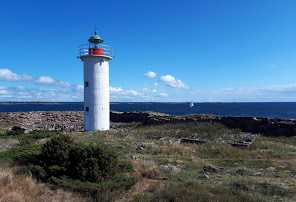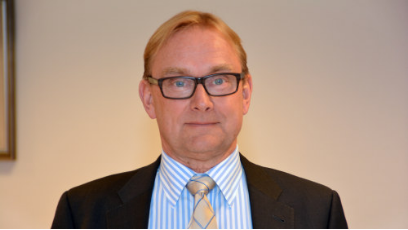Hanko,Finland 作者: 来源: 发布时间:2021-02-18
一、所属省或是州,具体位置,人口,面积

Hanko is one of the bilingual port towns and municipality on the south coast of Finland, 130 kilometres (80 mi) west of Helsinki. Its current population is 8,386 (31 January 2019),with a majority being Finnish speakers and a strong minority being Swedish speakers (44%).
Hangö city borders the city of Raseborg and the municipality of Kimitoön. The city's linguistic status is bilingual, with Finnish as a majority language (about 54%) and Swedish as a minority language (about 43%). However, Swedish was the municipality's majority language until the 1970s.
At the end of 2017, Hanko had 8,517 inhabitants, of which 8,100 lived in urban areas, 285 in sparsely populated areas and the coordinates of the place of residence of 132 inhabitants were unknown. The degree of agglomeration is calculated for those residents whose coordinates of residence are known; the agglomeration rate in Hanko is 96.6%. The population of the Hanko agglomeration is divided between two different agglomerations
Population (2019-01-31)
Total 8,386
Rank 114th largest in Finland
Density 71.74/km2 (185.8/sq mi)
Population by age
0 to 14 15.2%
15 to 64 65.4%
65 or older 19.4%
二、自然地理
1. 地理条件
Hanko has a humid continental climate (KöppenDfb), similar to other locations in southern Finland. The land of Hanko is around 799.99 km2 (308.88 sq mi). The city has a coastline of approximately 130 km (80 mi), of which 30 km (20 mi) are sandy beaches. There are also over 90 small islands and islets within the city limits.
The skyline of Hanko is dominated by the church and the water tower. Both of them received their current appearance after World War II, as their predecessors were either damaged or destroyed by the Soviet Armed Forces.
Hanko is located in southwestern Uusimaa, 127 kilometers west of Helsinki and 145 kilometers southeast of Turku. The nearest neighboring town is Raseborg 35 kilometers northeast. The sea surrounds Hanko on three sides, so the land border is only a few kilometers from the city of Raseborg. The city's neighboring municipalities are Kemiönsaari and Raseborg. Hanko is the southernmost municipality in mainland Finland.
Due to its location, the climate in Hanko is mild and maritime, and the temperature variations are small in Finnish. The average annual temperature was 6.0 ° C during the period 1981–2010 [8]. There are a few small lakes and ponds in the Hanko area, such as Sandöträsket, Skogbyträsket and Österfjärden. There are several ponds on Russarö Island south of the city center, including Lemmenlampi. In addition to Russarö, the Hanko sea area has numerous smaller islands and rugged rock islets. The distance to the northwest coast of Estonia is about 70 kilometers.
2. 交通情况
The port of Hanko began to rapidly developed with constructing the railway to Helsinki area in 1873. It was unique nonfreezing port in all Finland in those times. The city itself was founded a year later - in 1874. Hanko became a pearl of Southern Finland at once - magnificent summer residences and villas (area Spa Park) began appears here in the beginning of the last century .Since 1873, Hanko has had a rail link with the rest of Finland through the Hanko line. Even today, both freight and passenger traffic remain. Passenger traffic is maintained between Hanko and Karis. In the spring of 2006, the old diesel-powered locomotives that hauled passenger cars were replaced with modern rail buses.Nowadays There are two ways to get around Hanko, Bus station and Passenger Harbour(Ferry in Hanko). Other than those two public transportation ways, driving and taxi are also possible in Hanko. There are serveral Taxi companies, such as Taxi Tony Ahlkvist, VR-Yhtyma, HangoUla-Taxi Ab and so on. From Hanko, exit 25, which connects the city with the rest of Finland. A smaller road goes to Lappvik via Täktom and Tvärminne. The Chapel Harbor and Hangöby Harbor are both two marinas and are mainly used by the locals in Hangö. However, in the port of Hangöby there are also about 20 guest boat seats.
三、经济发展和规模
Hanko city is part of Raseborg's economic region. About 60% of Hanko employees work in service positions and about 40% in industry and construction. In addition to the city of Hanko, the largest jobs are Assistor, Helkama and Hangö Stevedoring in the port. Specialties include Christmas decoration manufacturer Koristevienni, dynamite factory Forcit, sausage casings ViskoTeepak and industrial bicycles Manner's machine shop.
The Port of Hanko is a limited company of the City of Hanko. It is the southernmost and fifth largest port in Finland. The Port of Hanko consists of three port parts: the West Harbor, the Outer Harbor and the Port of Koverhar, which are managed by HangonSatamaOy. The port of Hanko was founded in 1872. Transfennica is the largest shipping company in Hanko. Imports of international freight traffic in the port of Hanko 1,767,054 tonnes and exports 1,879,117 tonnes in 2008.
In summer, the number of restaurants in the city increases compared to winter, and events are often held during the summer months. There are events in the city in the summer, e.g. Hangon Regatta.
四、产业特点重点项目
One of Hanko's major employers is LevatorOy, a subsidiary of KoneCranes, a company focused on the manufacture of heavy steel structures and cranes, founded in 1969. The company directly and indirectly employs about 100 people.
Main Corporates list:
HelkamaBicaOy, bicycle manufacturing
ForcitOyAb, explosives manufacture
ViskoOyAb, fiber-based manufacturing of fiber
SSAB Europe Oy. The company manufactures steel pipes and is located in the urban area of Lappvik.
MannerinkonepajaOy. The company manufactures wheels for, among other things, carts.
HangöMekaniskaAbOy. The company manufactures machines for metallurgy.
KonecranesOyj. The company manufactures lifting cranes.
Helo Ab. Manufactures sauna products, including ovens and control panels.
五、风景名胜,景点
1. Hanko Peninsula

The Hanko Peninsula, also spelled Hango, is the southernmost point of mainland Finland. The soil is a sandy moraine, the last tip of the Salpausselkä ridge, and vegetation consists mainly of pine and low shrubs. The peninsula is known for its beautiful archipelago and long sandy beaches. The town of Hanko is situated on the peninsula. The Baltic Sea proper is demarcated by a line from the Hanko Peninsula to the northwesternmost point of mainland Estonia. The waters east of this line are considered the Gulf of Finland. The Battle of Gangut was fought outside the Hanko peninsula on 7 August 1714. The Hanko Peninsula has played a major part during times of war. Some of the Russian fortifications that were built as part of Peter the Great's Naval Fortress are located here. During the Finnish Civil War, the German Ostsee Division landed here in April 1918. Following the Winter War, the peninsula was leased to the Soviet Union for 30 years as a naval base. However, the Soviets evacuated their 25,000 soldiers in the area during the Continuation War and it was retaken by the Finns and the Swedish Volunteer Battalion in December 1941.
2. Russarö

Russarö is an island south of Hanko. The island is closed to the public as it is military area of the Finnish Defence Forces. The island has a five-story stone lighthouse built in 1863 and a Finnish Meteorological Institute weather station.
3. Gustavsvärn

Gustavsvärn (-vä: 'rn) is a shuttle from the radio station about 3 km south of Hangö. You will be able to use the home page from Sweden. ByggetavfästningenframskredLångsamtocenenbart den yttremurenbyggdesfärdigt. Ryssarnasprängdefästningen under Krimkrigetförattengelsmänochfransmäninteskullekunnabesätta den. During the summer there are also daily boat connections to Finland's highest lighthouse (also the highest in the Nordic region), Bengtskär.
4.Hanko Fortress Museum

The museum has various exhibitions related to Hanko.
六、历史文化
1. 历史
The site was already known by sailors in the 15th century. Petroglyphs from that time are carved into the rock at the Hauensuoli (Swedish: Gäddtarmen, English: Pike's Gut) island.
Hanko has a long history of wars and battles. The Battle of Gangut between Swedish and Russian navies was fought in 1714 in the archipelago north of the peninsula. The battle was the first-ever victory of the Russian regular fleet.
The fortification works on the Hanko Peninsula had already been started by the end of the 18th century, when the Swedish constructed three separate forts on the outlying islands. The forts were taken over by Russia in 1809, and were later bombarded by the Royal Navy during the Crimean War and were eventually blown up during the hostilities by their own defenders.
The city was founded in 1874, soon after the Hanko-Hyvinkää railway was inaugurated in 1872. The Imperial Charter for the city was granted by TsarAlexander II.
In the late 19th and early 20th centuries, Hanko was the port of choice for emigrants leaving Finland for a new life in North America. A memorial statue, showing birds in flight, commemorates this.
In the late 19th century, while Finland was still a Grand Duchy under Russia, Hanko was a popular sparesort for the Russian nobility. Some of the buildings from that period survive, notably the Hanko Casino (which is not a gambling establishment, but a former banquet hall of the spa). It is currently a restaurant. The Hotel Continental (1901) (now the Hotel Regatta) was designed by architect Lars Sonck in the notable Jugendstil style of the time; after falling into disrepair, the hotel was restored to its former glory in 2013.
Field Marshal C. G. Mannerheim owned a café, De fyra vindarnas hus (Finnish: Neljän Tuulen Tupa, English: The House of the Four Winds), which is still popular among tourists and residents alike.
The Bengtskärlighthouse, situated 25 km (16 mi) southwest of Hanko, is the tallest (52 m or 171 ft) in the Nordic countries. It was built in 1906 and was the first lighthouse museum in Finland.
2.文化
The Hangö Theater Meeting, Finland's largest Swedish-language theater festival, is held annually in Hangö in June. The 30-40 performances are played in Hangö's old magazine, in port buildings, outdoors and in restaurants. The festival is organized by the Hangö theater meeting.
Hangö Music Days is held every year in mid-July. The Music Days consist of a series of chamber music concerts of international level as well as at least a jazz concert. In connection with the festival there is also a music camp for children and young people. Festival leader is violinist MillaRantala and since the fall of 2012 OutiNiemensivu has served as the event's operations manager.
七、其他信息
The Hanko Peninsula, on which the city is located, is the southernmost tip of continental Finland. The soil is a sandy moraine, and vegetation consists mainly of pine and low shrubs, mostly Calluna. Hanko is known for its beautiful archipelago.
Hanko is a summer town and above all a sea town. This is best seen in the East Harbor guest marina, where about 7,000 crews stay overnight during the boating season. There are always sailing races every weekend and sunbathers and swimmers are cooked on miles of hippie sandy beaches.
Hanko is Finland's southernmost city and is located at the far end of the Hanko cape. What characterizes the city are its beaches in general and its shallow sandy beaches in particular. The city has no less than 30 km of sandy beaches. It is a typical summer town that lives on in the summer when countless events follow each other. Every year, thousands of tourists come to the city to enjoy the sun and sea. One of the summer's biggest events is the Hangö Regatta, which is organized in July each year. Hanko has a century-long history as a seaside resort. As a port city, its history is even longer. The port was opened to traffic in 1873, one year before the city was founded.
八、联系方式

City of HankoMayor: Denis Strandell
Address: Bulevardi 6, 10900 Hanko, Finland
Phone: +358 19 22031
Website: www.hanko.fi
Facebook: @hangonkaupunkihangostad
E-mail: tourist.office@hanko.fi
